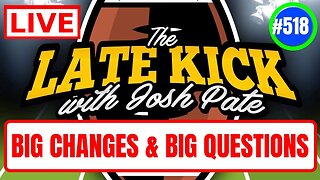Eyesight Courses for Better Vision: Clarity Through Learning
Low vision is a challenge faced by millions, significantly affecting their quality of life. Traditional solutions often focus on managing symptoms rather than enhancing the existing vision. However, eyesight improvement courses are emerging as a beacon of hope for those with low vision, offering new ways to maximize their visual potential. These courses, grounded in the latest vision science, provide practical exercises and strategies to help individuals improve their sight.
Understanding Low Vision
Low vision is a condition characterized by significant visual impairment that cannot be fully corrected with standard glasses, contact lenses, surgery, or medicine. It encompasses a variety of issues, including reduced visual acuity, poor depth perception, blind spots, and more. For those affected, everyday tasks can become challenging, impacting independence and well-being.
The Role of Eyesight Improvement Courses
Eyesight improvement courses aim to teach individuals with low vision how to better utilize their residual vision. These courses focus on exercises that can strengthen the eyes and improve neural processing related to vision. They often incorporate techniques for more effective scanning, focusing, and recognizing objects, thereby enhancing the functional vision for daily activities.
Key Components of Eyesight Improvement Courses
Visual Skills Training: This includes exercises to improve focus, eye movement control, and coordination between the eyes and the brain. Such training helps in optimizing the use of available vision.
Adaptive Strategies: Learners are taught how to adapt their environments to their visual needs. This might involve using specific lighting conditions, contrast enhancement, and organizing spaces to minimize visual clutter.
Assistive Technology Utilization: Courses often introduce participants to various assistive technologies, including magnifying devices, text-to-speech readers, and specialized software, making it easier to perform daily tasks.
Psychosocial Support: Many courses also provide support for dealing with the emotional and psychological impacts of low vision, offering strategies to maintain a positive outlook and stay engaged with one's community and interests.
Benefits of Eyesight Improvement Courses
Increased Independence: Improved vision skills can lead to greater autonomy in daily activities, from reading and writing to navigating spaces.
Enhanced Quality of Life: With better management of their vision, individuals can enjoy a richer engagement with their hobbies, social activities, and professional pursuits.
Empowerment: Learning to maximize their visual capabilities gives people with low vision a sense of control over their lives, boosting confidence and well-being.
Community and Support: Participants often find a sense of community and understanding among peers and professionals, which is invaluable in navigating the challenges of low vision.
Finding the Right Course
Choosing the right eyesight improvement course is crucial. It's important to look for programs led by certified professionals with experience in low vision therapy. Many optometrists and ophthalmologists can provide referrals to reputable programs. Additionally, organizations dedicated to helping those with visual impairments often offer or can recommend suitable courses.
Conclusion
Eyesight improvement courses offer a promising avenue for enhancing the lives of those with low vision. By combining practical vision exercises with strategies to adapt to visual limitations, these courses empower individuals to make the most of their residual vision. While not a cure, they provide tools and techniques that can significantly improve functionality and quality of life, offering hope and a way forward for many facing the challenges of low vision.
-
 3:42:05
3:42:05
EricJohnPizzaArtist
4 hours agoAwesome Sauce with Eric John
18.8K1 -
 3:00:20
3:00:20
vivafrei
15 hours agoEp. 213: SHUTTING DOWN ALEX JONES? Biden Regime War in FULL FORCE! Viva & Barnes Live!
133K260 -
 1:08:34
1:08:34
The Late Kick with Josh Pate
6 hours agoLate Kick Live Ep 518: CFB’s Wildest Era | Biggest 2024 ?s | Impact Freshmen | Bold Predictions
21.3K -
 12:00
12:00
Dr. Eric Berg
1 day agoWhat Exercise Burns the Most Calories?
47.6K22 -
 4:48:29
4:48:29
LumpyPotatoX2
11 hours ago$10,000 PUBG Tournament w/GamersError - #RumbleTakeover
54.7K12 -
 3:22
3:22
One Bite Pizza Reviews
2 days agoBarstool Pizza Review - Marco Pizzeria & Restaurant (Branford, CT)
50.5K24 -
 41:46
41:46
Standpoint with Gabe Groisman
15 hours agoEp. 27. From GameStop to the NBA. Gabe Plotkin
60.5K6 -
 55:04
55:04
Matt Kohrs
12 hours agoThe Volatile Week Ahead || The MK Show
71.2K23 -
 26:18
26:18
Stephen Gardner
12 hours agoTop Republican UNLOADS on Democrats and Biden's MENTAL HEALTH!!
81.6K111 -
 44:30
44:30
Michael Franzese
2 days agoCancel Culture Backlash of My UK Tour | Michael Franzese
138K50